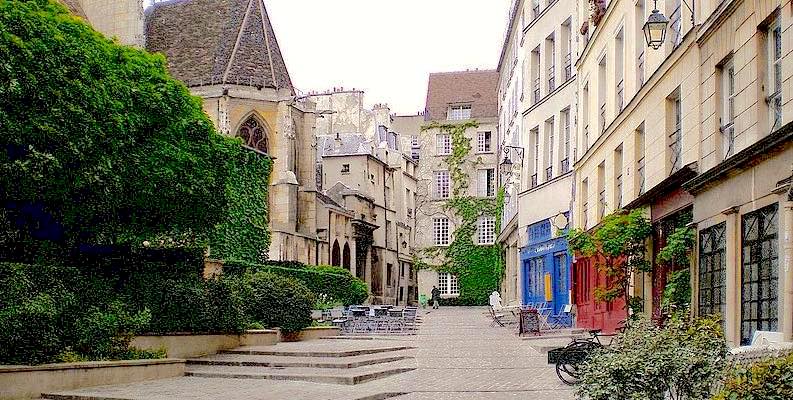The very ancient « rue des Barres » already existed in 1250 and had several names, the « ruelle au Moulin-des-Barres », the « ruelle des Moulins-du-Temple » then the « rue du Chevet-Saint-Gervais » until the 17th century. Rive Droite (up the Seine river on the North), it’s here that the first inhabitants had chosen to settle.
In the Middle Ages, the neighbourhood of Saint Gervais had become incredibly crowded and lively. The artisans worked directly on the street and interacted with the passersby.
In 1311 one day of october comes there the drama, Philippe the eldest son of Louis VI fell on horseback and killed himself inside a street full of dogs, hens and pigs wandering freely. A general ban followed to clear the environment but without any effect on people….
At the corner of the « rue Grenier sur l’Eau », one house highly recognizable with an upper floor that overflowed onto the street was built in 1327 on behalf of the Cistercian Abbaye (movement of Citeaux created in 1098 advocating the return of the authentic sources of Christianity) of the Ladies of Maubuisson. From 1672, the ladies of « La Croix St Gervais » occupied this place.
The street of François Miron, ancient Roman road of Lutecia (old name of Paris), at the beginning named the « rue du Cimetière-Saint-Gervais », then Pourtour-Saint-Gervais, also Monceau-Saint-Gervais, has been called like this since 1865. François Miron was a provost marshal of the merchants in 1607. The street starts in the « Place St- Gervais », famous for his elm tree sheltered where the justice was declared at this time, also a place where financial problems could be solved.
The renowned and magnificent « Hotel de Beauvais » at the number 68 hosted Mozart during his first stay in Paris. Currently, the Administrative Court of appeal of Paris is located there, it can be visited https://paris.cour-administrative-appel.fr/
By now, Le café Louis Philippe offers a nice shaded terrace close the « rue des Barres » and next to the church of Saint Gervais Protais.
